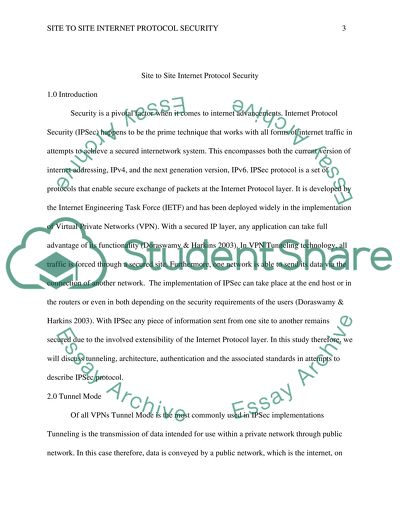Cite this document
(“Site to Site Internet Protocol Security Essay Example | Topics and Well Written Essays - 1500 words”, n.d.)
Site to Site Internet Protocol Security Essay Example | Topics and Well Written Essays - 1500 words. Retrieved from https://studentshare.org/information-technology/1671046-site-to-site-ipsec-vpn-tunneling
Site to Site Internet Protocol Security Essay Example | Topics and Well Written Essays - 1500 words. Retrieved from https://studentshare.org/information-technology/1671046-site-to-site-ipsec-vpn-tunneling
(Site to Site Internet Protocol Security Essay Example | Topics and Well Written Essays - 1500 Words)
Site to Site Internet Protocol Security Essay Example | Topics and Well Written Essays - 1500 Words. https://studentshare.org/information-technology/1671046-site-to-site-ipsec-vpn-tunneling.
Site to Site Internet Protocol Security Essay Example | Topics and Well Written Essays - 1500 Words. https://studentshare.org/information-technology/1671046-site-to-site-ipsec-vpn-tunneling.
“Site to Site Internet Protocol Security Essay Example | Topics and Well Written Essays - 1500 Words”, n.d. https://studentshare.org/information-technology/1671046-site-to-site-ipsec-vpn-tunneling.


